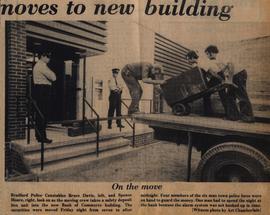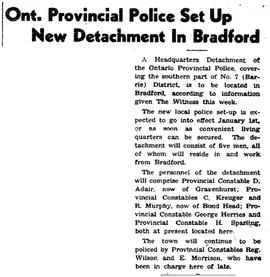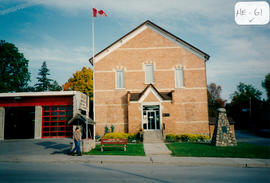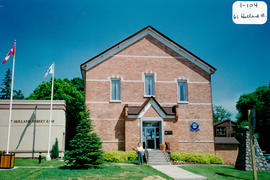Contains files and articles relating to the history of the Bradford Police Service and, after 1997 with the amalgamation with Innisfil's police force, the South Simcoe Police Service.
Police in Bradford history:
The Bradford Police Service was established in the early 1900s, though it only featured one Town Constable until it teamed up with the Ontario Provincial Police on January 1, 1949. These Provincial Constables lived in the area. By 1951, the OPP office was located at the corner of Holland Street and Barrie Street, and the Bradford Police in the Town Hall.
The Bradford Police moved into their new building at 1 Holland Street West, the former Canadian Bank of Commerce (where the jail cells were in the old bank vault) on September 25, 1976. They then moved in early 1980 to 45 Holland Street East, the building right to the west of the Town Hall and Courthouse.
In 1997, the Bradford Police Service and the Innisfil Police Service amalgamated into the South Simcoe Police, and the South Division (Bradford) branch was designated at their station house at 45 Holland St. East. The motion to amalgamate was first turned down in October of 1996 only to be revived by support from Mayor Frank Jonkman and other prominent citizens as a cost-saving method for the police forces. The Town Council voted in favour of the motion on November 12, 1996.
On April 15, 2005, when it was revealed that the new administrative building (where the current Leisure Centre and Library reside) would not be able to hold the police as well, a discussion began about a new building for the South Simcoe Police. It commenced construction in 2006. The South Simcoe Police began to move into their new South Division headquarters at 75 Melbourne Drive in February, 2008, with full services transferred over by August, and the old headquarters at 45 Holland St East was demolished on June 24-26, 2009. This is where the current South Simcoe Police reside.
In March of 2017, the issue surrounding the cost-saving methods of the amalgamation was brought up in Bradford West Gwillimbury town council again. Information is currently being gathered to see how cost-effective the South Simcoe Police service is run.




